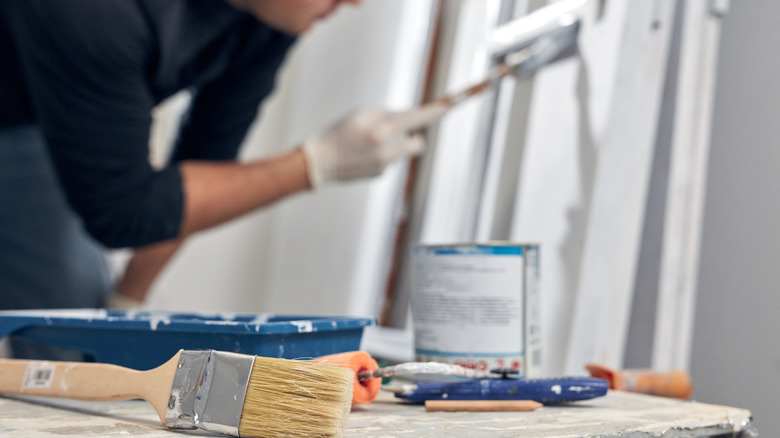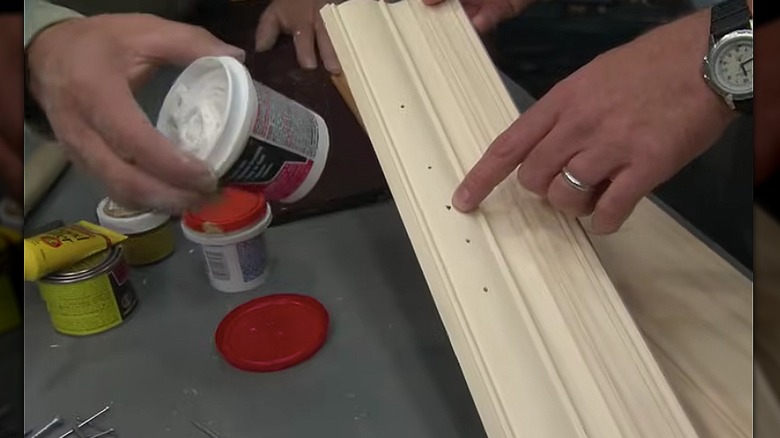3 Important Steps To Take Before Painting Your Woodwork
If you've ever lived in an older apartment ruled by a big-city landlord, you might be familiar with a particular type of paint job — at a glance, you can tell it was done in haste. You can see such thick layers of paint and repainting over the years that the corners of the wood have become rounded, and though all the chips and nail holes are covered over, they're still visible. If you don't want a reputation as a crummy landlord, it's better not to take these types of shortcuts as they'll produce less-than-ideal aesthetics. Instead, before you paint your woodwork, take care to sand, fill any holes, and use a primer because thoughtful prep now means fewer headaches later.
Of these three important steps, you'll need to properly sand the surface of your window frames, door frames, or other woodwork first. Since wood is porous, you'll want to remove any barriers to its ability to soak in primer and paint. Therefore, it's a good idea to invest in a coarse 80-grit sandpaper to remove the glossy layers of old paint and underlayers of primer. Then use finer and finer grades of sandpaper to remove any scratches left from the 80-grit, creating a smooth, even surface.
The importance of wood filler and primer
Nail holes left over from wall hangings and nicks or deep scratches from a collision create depressions in your woodwork that need to be filled, and, luckily, there are several fillers to choose from. Some are latex-based, others oil or solvent-based, there's vinyl filler and even a type of colored crayon; it all depends on the job. For an indoor project you'll be painting, you could use vinyl spackle or water-based wood filler, and as a best practice, we recommend over-filling the hole. Pro tip: before priming and once the wood filler has dried, use your fine sandpaper again to smooth down the bumps left from overfilling.
It's worth the extra time to lay down a coat of primer before you paint. Because of its composition, primer creates a tacky surface that helps paint adhere better, and paint that clings to a properly prepped surface will stay in good shape for longer without blistering or peeling. Primer covers a multitude of sins like grain patterns, knots, joints in the wood, and previous paint colors, and there are even anti-mold primers. These days, the primer doesn't even have to be white; you can get a primer somewhat closer to your paint color, potentially cutting down the amount of coverage you need. Then, once you've completed these three basics, you're ready to enliven your woodwork with a fresh coat of whatever color you like.

